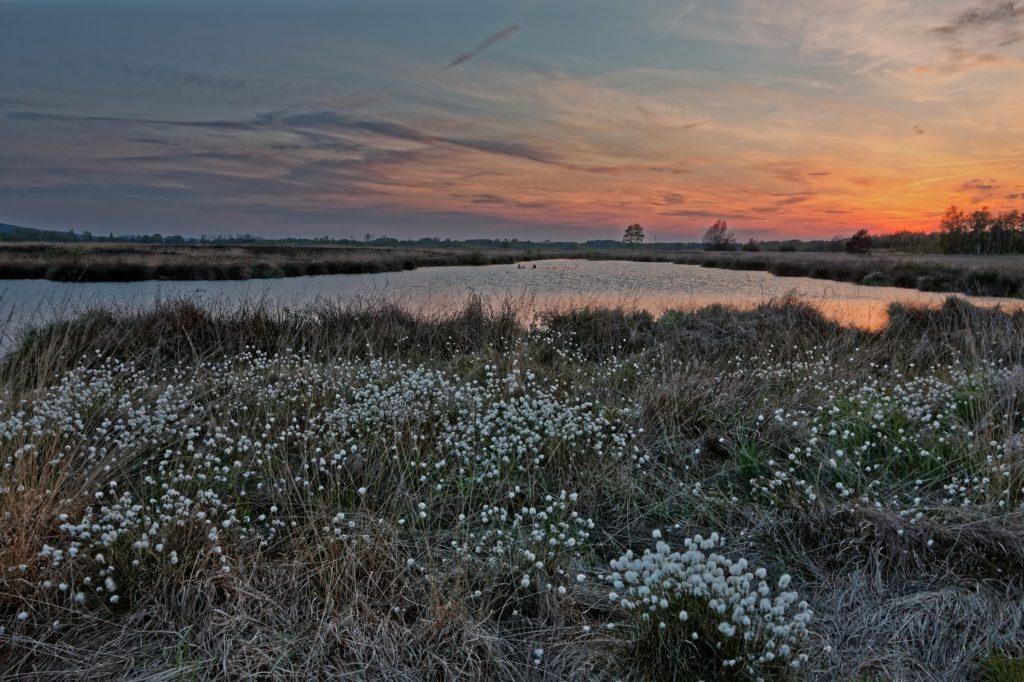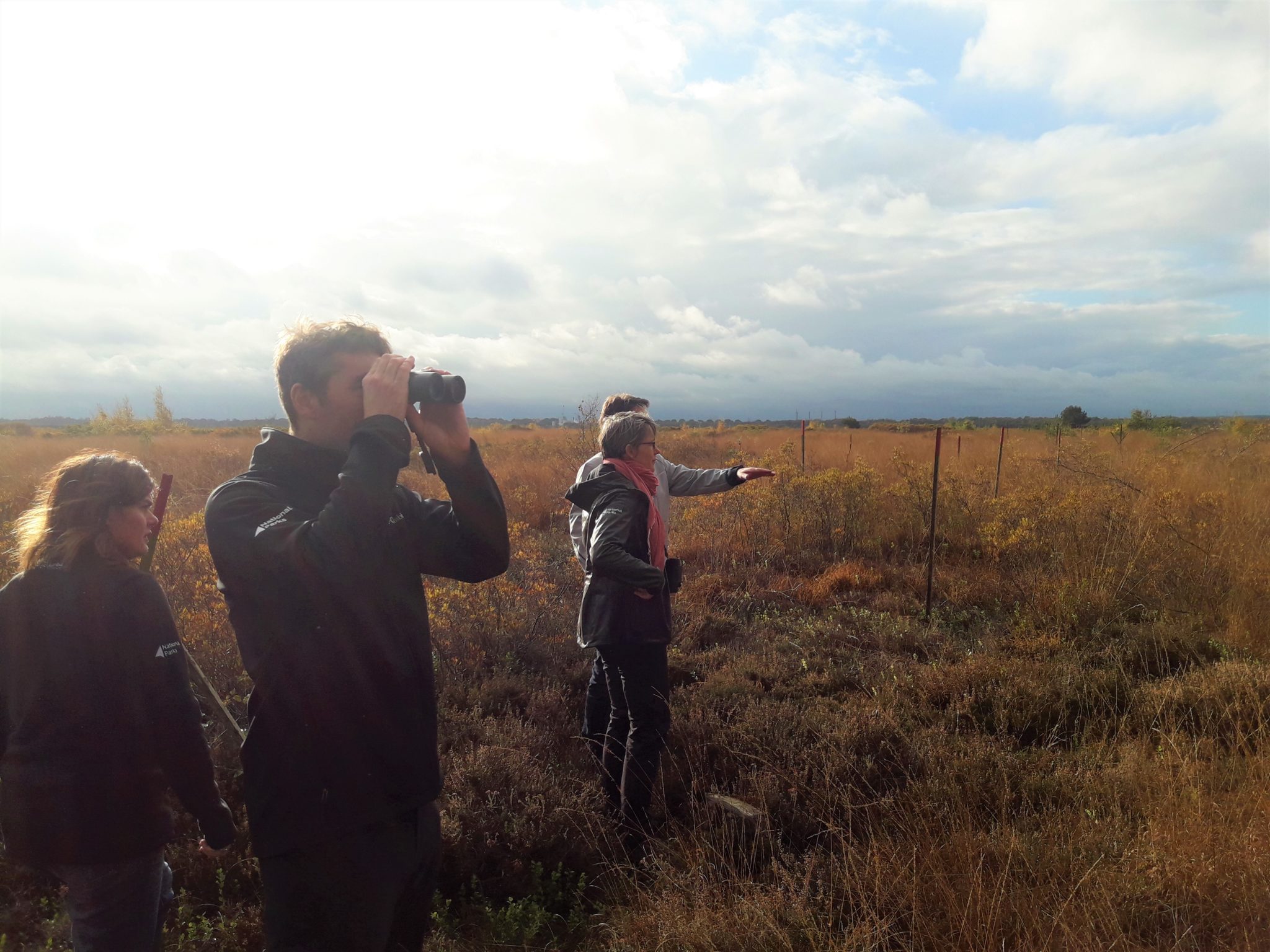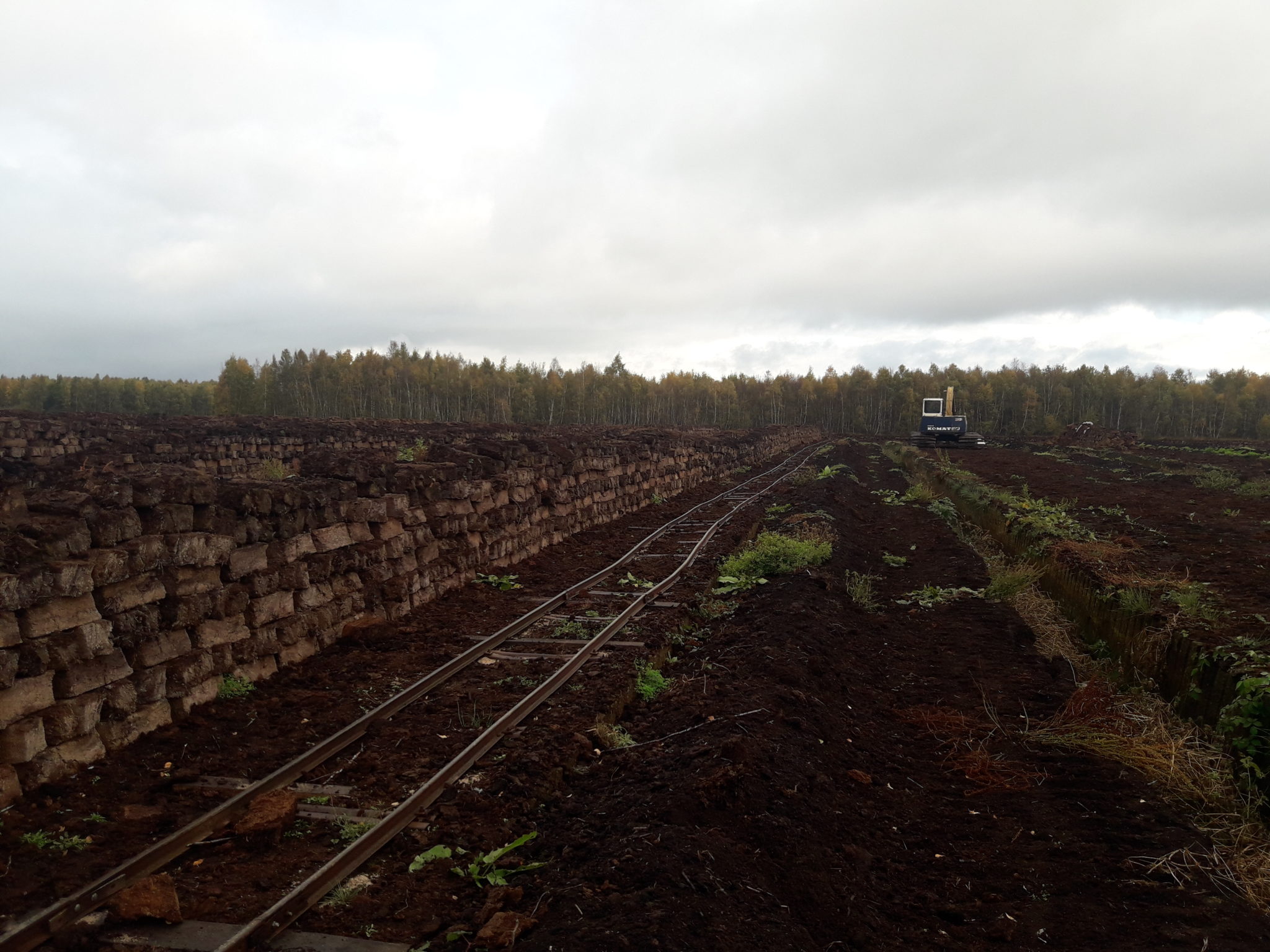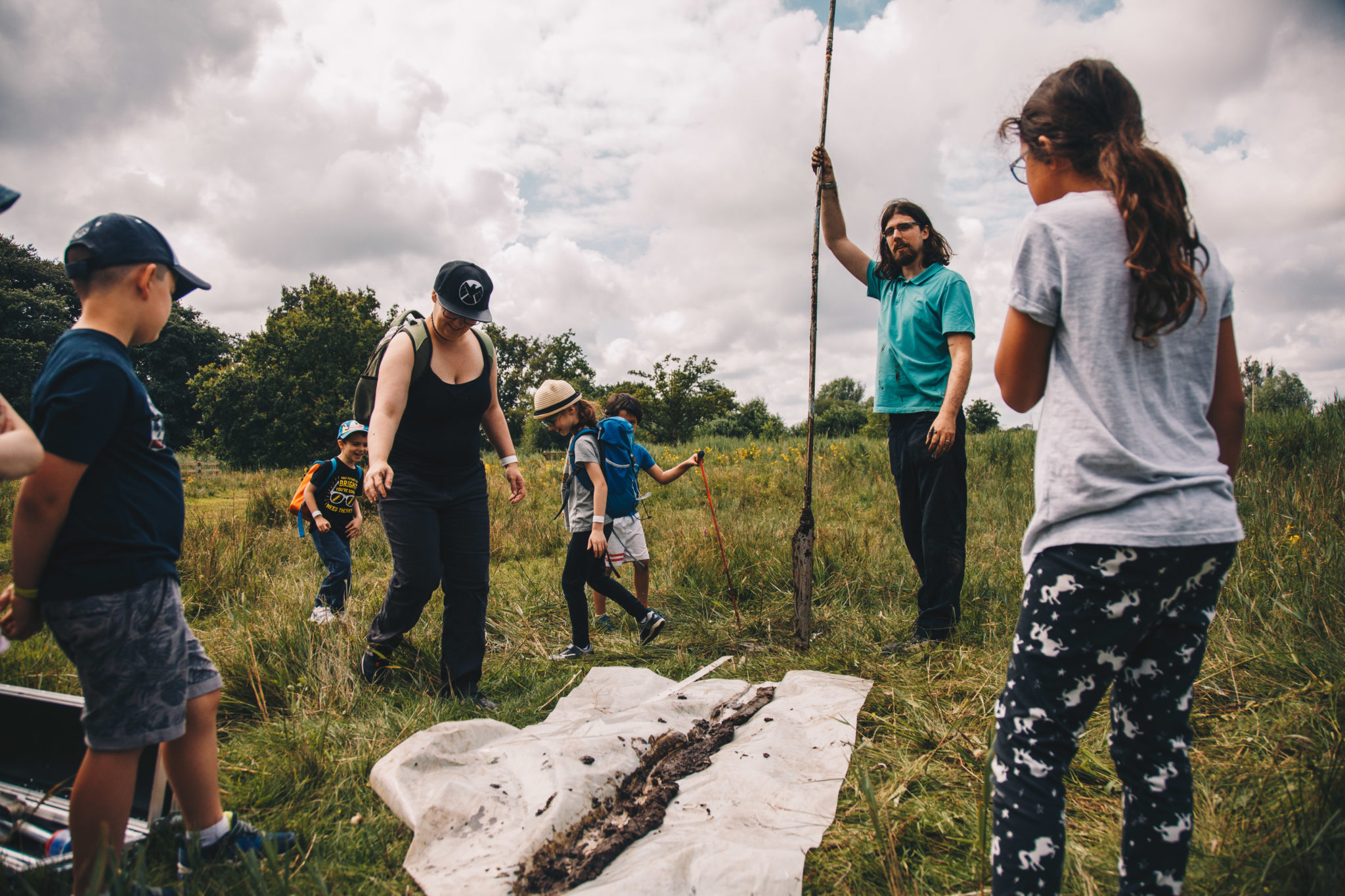For Peat’s Sake: The CANAPE project

DOI reference: 10.1080/13673882.2020.00001067
By Harry Mach, project manager at the UK Broads Authority.
The CANAPE project stands for Creating A New Approach to Peatland Ecosystems. In this article we explore why this is important, and what would a new approach look like.
The autumn sunlight breaks through bleak grey clouds. A lonely group of people walk through golden moorgrass stems, looking out across a fascinating landscape. Binoculars emerge to catch a glimpse of the 50 thousand cranes stopping over in this corner of Lower-Saxony, Germany.
Underfoot is a carpet of sphagnum moss, forming an upper crust on the waterlogged bog. For some ten thousand years, the dead roots of this moss have remained in place, prevented from breaking down by the anaerobic wetland environment. Whilst most plants decay rapidly after death, releasing the CO2 they have absorbed, in a wetland the carbon dioxide absorbed from the atmosphere is permanently stored in the soil.
Left untouched, there is no reason why this bog could not continue to store carbon in the soil for another ten millennia. This form of soil, known as peat, covers a mere 3% of the Earth’s land surface. However, it stores more carbon than all forest biomass on Earth.

Ecologists in the Diepholz Mire Basin visiting a peat extraction site.
Despite these amazing properties, behind our small group of sightseers, an excavator is loading squares of cut peat into a miniature railway wagon, to be hauled away, ground up, and packed into plastic bags. It will be stocked in your supermarket as “compost.”
This extraction of peat requires deep drainage of the bog, and eradicates all wildlife, leaving bare earth. Any remaining wetlands near the site are also undermined, as their water flows into the drained area and is then pumped away. All the stored CO2 in the land will end up in the atmosphere; a typical 100 litre bag of compost mix will emit the same amount of CO2 as driving a new European car 210 km.

Ecological devastation as peat is extracted from stripped bare earth.
In contrast, a few kilometres down the road a new form of agriculture has begun taking place in a small, unremarkable field. The CANAPE (Creating A New Approach to Peatland Ecosystem) project is trying something new. After decades of drainage-based agriculture, releasing thousands of tonnes of carbon from the soil into the atmosphere, the water level has been raised. This has rapidly halted the release of CO2. An area of land is carefully flattened, and a new reservoir built to control the water level. Rather than pigs, maize, potatoes or the other crops familiar to farmers in this area, it will grow moss.
Why moss? Rather than removing the peat itself, it has been demonstrated that the moss can be harvested and used as an effective replacement for peat in growing media. This replaces non-renewable peat resource with an endlessly sustainable green resource – which will also sequester carbon over the long term. Studies have also found that even though this is not rewilding, there are rare invertebrates attracted to these wetland sites. This initiative, led locally by Stiftung Naturschutz im Landkreis Diepholz, will demonstrate the possibility of this new type of farming to local farmers, breaking through the “someone else go first” barrier.

Building the sphagnum farm – moss being spread onto the newly prepared field.
Capturing a soil core – changing perception through paleoecology
Why are these products not on your shelves? Why can you not go and buy a packet of moss for your garden? In part because the supply is still developing. But also, consumers need to start demanding peat-free compost.
This leads us to head out into the wetlands of the Broads National Park. This incredible landscape is the largest protected wetland in England and is inhabited by many rare birds, insects and mammals. Invisible to the visitor however, is 39 million tonnes of CO2 stored under the surface.
Last summer, the Broads Authority invited 400 people to explore prehistoric trees and peat under their feet, at How Hill National Nature Reserve, by using peat coring devices to extract samples of peat and clay from up to 5m below ground. Visitors had the chance to hold still recognisable fragments of trees and peat in their hands.
Holding visibly stored carbon from 2,000 years ago in your hand is a powerful message. People can easily understand that the trees that absorbed the carbon 2,000 years ago are still there, preserved in the brushwood peat, metres under their feet and held in that state by the continuous wetness of the site. A brushwood peat core will still have visible twigs and branches from the trees that once lived there, sufficiently well preserved to identify the species.

Soil coring in the Broads
The future
This new approach to peatland ecosystems, developed by the CANAPE partnership, will play a key role in the future of agriculture in Europe. This article highlights only two of the many initiatives that the CANAPE project is pushing forward.
For many countries, restoring peatlands’ carbon-sink function is central to their climate change objectives and it will only rise up on the political agenda as the need to cut CO2 emissions becomes even more apparent. We need new crops that allow sustainable and profitable farming to go hand-in-hand with climate-friendly agriculture. Public awareness of the need for sustainable products, and the support for farmers to adopt them, will be essential for a sustainable future.
About CANAPE

CANAPE works to restore s and their vital ecosystem services, including carbon sequestration and storage. The project develops eco-friendly peatland farming methods and supports viable value chains for sustainable peatland products.
- Total budget: €5.5 million including ERDF funds of €2.7 million.
- Partnership: 14 partners from Denmark, the Netherlands, Germany, United Kingdom and Belgium
- Duration: 5 years (2017-2022)
To learn more and contact the project, visit CANAPE’s website.